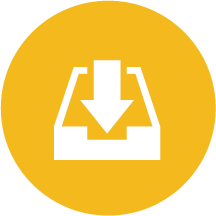What is GCE A-Level Mathematics
There are three levels in GCE A-Level Maths: Maths, Further Maths and Further Maths Additional. Regardless of exam boards, students need to take the core modules which involve algebra, trigonometry and calculus. Students also need to choose some applied modules, ranging from statistics and probability, to mechanics. Most students study Maths, while students who aspire to study Maths, Engineering, Physics or Economics at degree level take Further Maths and, very occasionally, Further Maths Additional.
How to get A/A* in GCE A-Level Mathematics
One advantage of taking GCE A-Level Maths is that the textbooks and exam questions are set by the individual exam boards, resulting in greater uniformity between their respective teaching objectives and their exam style. This makes preparing for the GCE A-level Maths exam markedly easier than that for IBDP. Most students struggle in overcoming the significant increment in difficulty between Core 1/2 and Core 3/4 for the trigonometry and calculus units.
At CANA, our tutors pinpoint the reasons behind mistakes and teach ‘targeting skills’ to avoid those mistakes occurring again in the future. Detailed examples are used alongside past paper questions, which are sorted into topics which shadow and support the syllabus of study. This effectively helps you practice and apply exam techniques to achieve top grades in tests, mocks and the final exams.
IAL stands for International A-Levels, so in terms of the syllabus content and the exam topics, it’s actually pretty similar to GCE/A-levels. The only significant difference is in how the exams are structured. IAL has 6 papers, 4 which cover compulsory topics. These are called P1, P2, P3, and P4, where P indicates Pure Maths. There are also additional electives that you can choose from: Mechanics (M1 and M2), Statistics (S1 and S2), or Decisions (D1). You must pick 2 electives out of that range. The most popular combinations are M1 and M2, or S1 and S2. Focusing purely on either mechanics or statistics gives students a comprehensive overview of that specific topic. It is also common to choose M1 and S1, which will offer broader but less comprehensive knowledge of both.
GCE/A-levels have recently changed their syllabus, and their exams differ somewhat. For Maths, 3 final exams are taken all in one go at the end of two years. These papers are Pure Maths 1, Pure Maths 2, and Statistics and Mechanics. In terms of content, Pure Maths 1 and 2 are about the same as P1-4 in IAL. There are very few differences. On the other hand, Statistics and Mechanics covers the material from S1 and M1 with a few additions. Students will often consider the difference in number of exam papers when picking IAL or GCE.
Is the Statistics or Mechanics course closer to DSE?
The answer depends on whether you have taken DSE Physics before. Mechanics is more similar to physics than other topics in maths, so if you have already studied DSE Physics, it might be more intuitive and relatable to you. If you have not taken DSE Physics, we generally recommend you to choose statistics. It may cover new concepts and information, but it is intuitively more similar and related to DSE Maths.
Which syllabus is more difficult?
Since the syllabus content is so similar, the only big difference is with the exams. In IAL, assessments are broken up into 6 different exams. It is fairly common to take 3 exams after your first year, usually P1, P2, and S1 or M1. Then in the next year you will complete P3 and P4, as well as your remaining elective. This is highly beneficial because you can spread your exams over two years. If you were unhappy with the results of your first year exams, you can retake them in the second year. Moreover, your studying and revision can be spread out, so you only have to focus on a few topics at any one time.
Conversely, A-level exams are taken in one go at the end of the second year, after you have finished the entire course. It consists of 3 big exam papers.
So to summarise, there is not much difference between GCE/A-level Maths and IAL Maths in terms of difficulty or content. But the exam format is very different, so do assess for yourself which format will suit you better.







